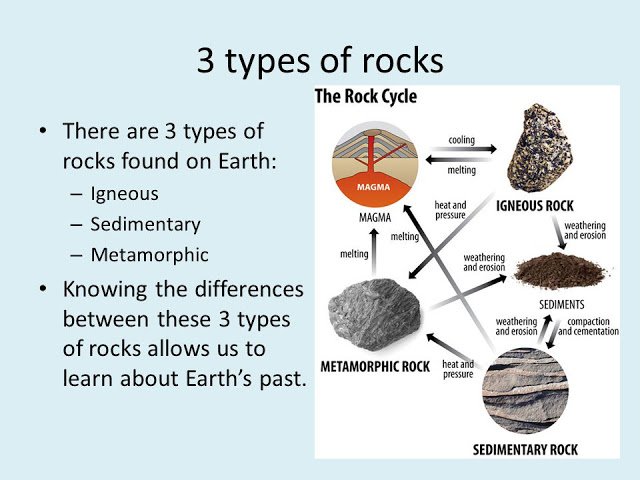The difference among Igneous rocks sedimentary rocks and metamorphic rocks
|
Igneous rocks
|
Sedimentary rocks
|
Metamorphic rocks
|
|
1. Formed by solidification of molten magma on cooling.
|
1. Formed by the consolidation of sediments.
|
1. Formed by subsequent transformation igneous and sedimentary rocks.
|
|
2. It may be called primary rocks because it formed first.
|
2. It is derived from the breaking down of primary rocks.
|
2. It is derived from the breaking down of primary and secondary rocks.
|
|
3. Igneous rocks consist mainly of primary minerals of which quartz, feldspar’s, amphiboles, pyroxenes, and mica are the most common.
|
3. Sedimentary rocks consist mainly of secondary minerals together with some qualities of primary minerals, such as limestone, sandstone, siltstone, shale, calcareous sandstone, arenaceous limestone, etc.
|
3. Metamorphic rocks consist of mainly granite, shales, limestone, sandstone, etc.
|
|
4. No action of water, glacier, and wind is taken place.
|
4. The action of water, glacier, and wind is taken place.
|
4. Influenced by heat, pressure, and gasses.
|
|
5. They have no layer so they called unstratified rocks.
|
5. They have layers so they called stratified rocks.
|
5. They may be layered or no layered.
|
|
6. These rocks are often shiny and glossy.
|
6. These rocks are soft looking and can contain fossils.
|
6. These rocks are hard and often contain crystals.
|
|
7. Example: Granite, gabbro, basalt, etc.
|
7. Example: Sandstone, siltstone, shale, etc.
|
7. Example: Marble, slate, gneiss, quartzite, etc.
|
You might interest more articles about Soil Science
Useful Agricultural Websites
Food and Agricultural Organization
